171 results found for 'System'. |1|2|3|4|5|6|7 | Next | View 100 per page
Low relevance matches: 115 other results may be of interest to you. Show low relevance matches
Earth Moon Sun - The Earth is part of a system of planets orbiting around a star (the sun) ACSSU150 Year 8 Biological Sciences
Organ Systems - Multi-cellular organisms contain systems of organs that carry out specialised functions that enable them to survive and reproduce ACSSU155 Year 8 Physical Sciences
Energy Forms - Energy appears in different forms, including movement (kinetic energy), heat and potential energy, and energy transformations and transfers cause change within systems ACSSU175 Year 9 Biological Sciences
Organ Systems - Multi-cellular organisms rely on coordinated and interdependent internal systems to respond to changes to their environment ACSSU176 Year 9 Biological Sciences
Ecology - Ecosystems consist of communities of interdependent organisms and abiotic components of the environment; matter and energy flow through these systems ACSSU179 Year 9 Chemical Sciences
Chemical Reactions - Chemical reactions, including combustion and the reactions of acids, are important in both non-living and living systems and involve energy transfer ACSSU188 Year 10 Earth and Space Sciences
Universe - The universe contains features including galaxies, stars and solar systems and the Big Bang theory can be used to explain the origin the universe ACSSU189 Year 10 Earth and Space Sciences
Global Systems - Global systems, including the carbon cycle, rely on interactions involving the biosphere, lithosphere, hydrosphere and atmosphere ACSSU190 Year 10 Physical Sciences
Energy Conservation - Energy conservation in a system can be explained by describing energy transfers and transformations ACSBL019 Year 11 Biodiversity and the interconnectedness of life
Describing biodiversity - Ecosystems are diverse, composed of varied habitats and can be described in terms of their component species, species interactions and the abiotic factors that make up the environment ACSBL029 Year 11 Biodiversity and the interconnectedness of life
Ecosystem dynamics - Models of ecosystem interactions (for example, food webs, successional models) can be used to predict the impact of change and are based on interpretation of and extrapolation from sample data (for example, data derived from ecosystem surveying techniques ACSCH061 Year 11 Molecular interactions and reactions
Aqueous solutions and acidity - Water is a key substance in a range of chemical systems because of its unique properties, including its boiling point, density in solid and liquid phases, surface tension, and ability to act as a solvent ACSCH091 Year 12 Equilibrium acids and redox reactions
Chemical equilibrium systems - Over time, physical changes and reversible chemical reactions reach a state of dynamic equilibrium in a closed system, with the relative concentrations of products and reactants defining the position of equilibrium ACSCH096 Year 12 Equilibrium acids and redox reactions
Chemical equilibrium systems - Equilibrium position can be predicted qualitatively using equilibrium constants ACSCH097 Year 12 Equilibrium acids and redox reactions
Chemical equilibrium systems - Acids are substances that can act as proton (hydrogen ion) donors and can be classified as monoprotic or polyprotic depending on the number of protons donated by each molecule of the acid ACSCH098 Year 12 Equilibrium acids and redox reactions
Chemical equilibrium systems - The strength of acids is explained by the degree of ionisation at equilibrium in aqueous solution, which can be represented with chemical equations and equilibrium constants (Ka) ACSCH099 Year 12 Equilibrium acids and redox reactions
Chemical equilibrium systems - The relationship between acids and bases in equilibrium systems can be explained using the Brønsted Lowry model and represented using chemical equations that illustrate the transfer of hydrogen ions ACSCH100 Year 12 Equilibrium acids and redox reactions
Chemical equilibrium systems - The pH scale is a logarithmic scale and the pH of a solution can be calculated from the concentration of hydrogen ions; Kw can be used to calculate the concentration of hydrogen ions from the concentration of hydroxide ions in a solution ACSCH101 Year 12 Equilibrium acids and redox reactions
Chemical equilibrium systems - Acidbase indicators are weak acids or bases where the acidic form is of a different colour to the basic form ACSCH102 Year 12 Equilibrium acids and redox reactions
Chemical equilibrium systems - Volumetric analysis methods involving acidbase reactions rely on the identification of an equivalence point by measuring the associated change in pH, using chemical indicators or pH meters, to reveal an observable end point ACSPH016 Year 11 Thermal nuclear and electrical physics
Heating processes - Heat transfer occurs between and within systems by conduction, convection and/or radiation ACSPH022 Year 11 Thermal nuclear and electrical physics
Heating processes - Two systems in contact transfer energy between particles so that eventually the systems reach the same temperature; that is, they are in thermal equilibrium ACSPH064 Year 11 Linear Motion and Waves
Linear motion and force - Momentum is a property of moving objects; it is conserved in a closed system and may be transferred from one object to another when a force acts over a time interval ACSPH065 Year 11 Linear Motion and Waves
Linear motion and force - Energy is conserved in isolated systems and is transferred from one object to another when a force is applied over a distance; this causes work to be done and changes to kinetic and/or potential energy of objects ACSPH073 Year 11 Linear Motion and Waves
Waves - A mechanical system resonates when it is driven at one of its natural frequencies of oscillation; energy is transferred efficiently into systems under these conditions ACSBL052 Year 11 Biodiversity and the interconnectedness of life
Ecosystem dynamics - Photosynthesis is a biochemical process that in plant cells occurs in the chloroplast and that uses light energy to organic compounds; the overall process can be represented as a balanced chemical equation ACSBL053 Year 11 Biodiversity and the interconnectedness of life
Ecosystem dynamics - Cellular respiration is a biochemical process that occurs in different locations in the cytosol and mitochondria and metabolises organic compounds, aerobically or anaerobically, to release useable energy in the form of ATP; the overall process can be repr ACSPH021 Year 11 Thermal nuclear and electrical physics
Heating processes - Change of state involves internal energy changes to form or break bonds between atoms or molecules; latent heat is the energy required to be added to or removed from a system to change the state of the system
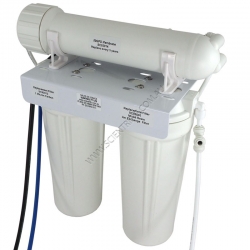
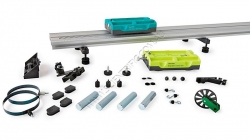


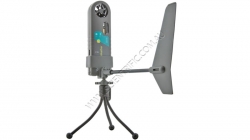
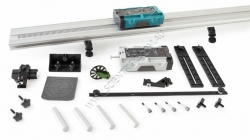
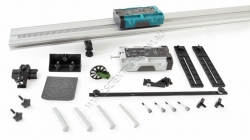

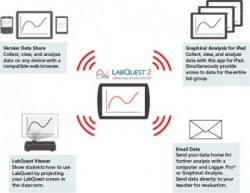
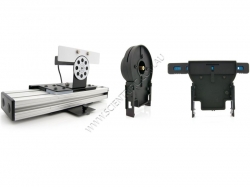

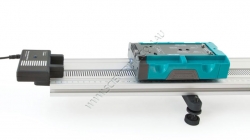

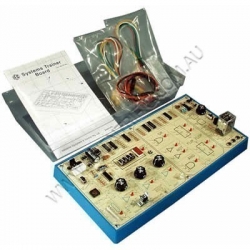



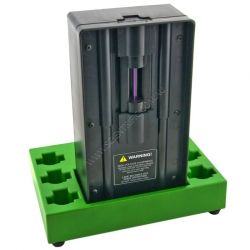
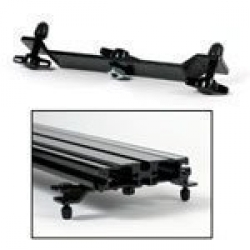
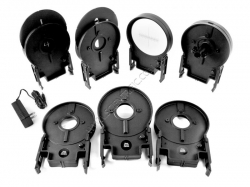
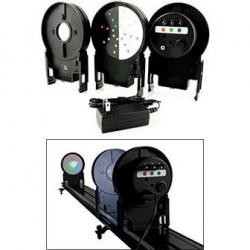



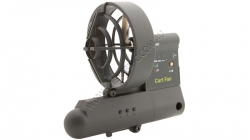
171 results found for 'System'. |1|2|3|4|5|6|7 | Next | View 100 per page
Low relevance matches: 115 other results may be of interest to you. Show low relevance matches
Curriculum resources related to 'System'
ACSSU078 Year 5 Earth and Space SciencesEarth Moon Sun - The Earth is part of a system of planets orbiting around a star (the sun) ACSSU150 Year 8 Biological Sciences
Organ Systems - Multi-cellular organisms contain systems of organs that carry out specialised functions that enable them to survive and reproduce ACSSU155 Year 8 Physical Sciences
Energy Forms - Energy appears in different forms, including movement (kinetic energy), heat and potential energy, and energy transformations and transfers cause change within systems ACSSU175 Year 9 Biological Sciences
Organ Systems - Multi-cellular organisms rely on coordinated and interdependent internal systems to respond to changes to their environment ACSSU176 Year 9 Biological Sciences
Ecology - Ecosystems consist of communities of interdependent organisms and abiotic components of the environment; matter and energy flow through these systems ACSSU179 Year 9 Chemical Sciences
Chemical Reactions - Chemical reactions, including combustion and the reactions of acids, are important in both non-living and living systems and involve energy transfer ACSSU188 Year 10 Earth and Space Sciences
Universe - The universe contains features including galaxies, stars and solar systems and the Big Bang theory can be used to explain the origin the universe ACSSU189 Year 10 Earth and Space Sciences
Global Systems - Global systems, including the carbon cycle, rely on interactions involving the biosphere, lithosphere, hydrosphere and atmosphere ACSSU190 Year 10 Physical Sciences
Energy Conservation - Energy conservation in a system can be explained by describing energy transfers and transformations ACSBL019 Year 11 Biodiversity and the interconnectedness of life
Describing biodiversity - Ecosystems are diverse, composed of varied habitats and can be described in terms of their component species, species interactions and the abiotic factors that make up the environment ACSBL029 Year 11 Biodiversity and the interconnectedness of life
Ecosystem dynamics - Models of ecosystem interactions (for example, food webs, successional models) can be used to predict the impact of change and are based on interpretation of and extrapolation from sample data (for example, data derived from ecosystem surveying techniques ACSCH061 Year 11 Molecular interactions and reactions
Aqueous solutions and acidity - Water is a key substance in a range of chemical systems because of its unique properties, including its boiling point, density in solid and liquid phases, surface tension, and ability to act as a solvent ACSCH091 Year 12 Equilibrium acids and redox reactions
Chemical equilibrium systems - Over time, physical changes and reversible chemical reactions reach a state of dynamic equilibrium in a closed system, with the relative concentrations of products and reactants defining the position of equilibrium ACSCH096 Year 12 Equilibrium acids and redox reactions
Chemical equilibrium systems - Equilibrium position can be predicted qualitatively using equilibrium constants ACSCH097 Year 12 Equilibrium acids and redox reactions
Chemical equilibrium systems - Acids are substances that can act as proton (hydrogen ion) donors and can be classified as monoprotic or polyprotic depending on the number of protons donated by each molecule of the acid ACSCH098 Year 12 Equilibrium acids and redox reactions
Chemical equilibrium systems - The strength of acids is explained by the degree of ionisation at equilibrium in aqueous solution, which can be represented with chemical equations and equilibrium constants (Ka) ACSCH099 Year 12 Equilibrium acids and redox reactions
Chemical equilibrium systems - The relationship between acids and bases in equilibrium systems can be explained using the Brønsted Lowry model and represented using chemical equations that illustrate the transfer of hydrogen ions ACSCH100 Year 12 Equilibrium acids and redox reactions
Chemical equilibrium systems - The pH scale is a logarithmic scale and the pH of a solution can be calculated from the concentration of hydrogen ions; Kw can be used to calculate the concentration of hydrogen ions from the concentration of hydroxide ions in a solution ACSCH101 Year 12 Equilibrium acids and redox reactions
Chemical equilibrium systems - Acidbase indicators are weak acids or bases where the acidic form is of a different colour to the basic form ACSCH102 Year 12 Equilibrium acids and redox reactions
Chemical equilibrium systems - Volumetric analysis methods involving acidbase reactions rely on the identification of an equivalence point by measuring the associated change in pH, using chemical indicators or pH meters, to reveal an observable end point ACSPH016 Year 11 Thermal nuclear and electrical physics
Heating processes - Heat transfer occurs between and within systems by conduction, convection and/or radiation ACSPH022 Year 11 Thermal nuclear and electrical physics
Heating processes - Two systems in contact transfer energy between particles so that eventually the systems reach the same temperature; that is, they are in thermal equilibrium ACSPH064 Year 11 Linear Motion and Waves
Linear motion and force - Momentum is a property of moving objects; it is conserved in a closed system and may be transferred from one object to another when a force acts over a time interval ACSPH065 Year 11 Linear Motion and Waves
Linear motion and force - Energy is conserved in isolated systems and is transferred from one object to another when a force is applied over a distance; this causes work to be done and changes to kinetic and/or potential energy of objects ACSPH073 Year 11 Linear Motion and Waves
Waves - A mechanical system resonates when it is driven at one of its natural frequencies of oscillation; energy is transferred efficiently into systems under these conditions ACSBL052 Year 11 Biodiversity and the interconnectedness of life
Ecosystem dynamics - Photosynthesis is a biochemical process that in plant cells occurs in the chloroplast and that uses light energy to organic compounds; the overall process can be represented as a balanced chemical equation ACSBL053 Year 11 Biodiversity and the interconnectedness of life
Ecosystem dynamics - Cellular respiration is a biochemical process that occurs in different locations in the cytosol and mitochondria and metabolises organic compounds, aerobically or anaerobically, to release useable energy in the form of ATP; the overall process can be repr ACSPH021 Year 11 Thermal nuclear and electrical physics
Heating processes - Change of state involves internal energy changes to form or break bonds between atoms or molecules; latent heat is the energy required to be added to or removed from a system to change the state of the system
Products related to 'System'

Reverse Osmosis Deioniser System
A deioniser is a great replacement for a traditional, energy wasting electric still as deionisers use no electricity or cooling water.
Our Reverse Osmosis Deioniser has been specially built for us and has a 3 step deionisation process that uses a carbon filter, a reverse osmos...
Order code: SC93010

Vernier Go Direct Dynamics System
VERNIER DYNAMICS CART AND TRACK SYSTEM WITH GO DIRECT SENSOR CART
The Vernier Dynamics Cart and Track System with Vernier Go Direct® Sensor Cart includes essential laboratory equipment for teaching dynamics and kinematics. Using Vernier's Go Direct Sensor Cart, students c...
Order code: DTS-GDX



Vernier Go Direct Dynamics System Long
VERNIER DYNAMICS CART AND TRACK SYSTEM WITH GO DIRECT SENSOR CART AND LONG TRACK
The Vernier Dynamics Cart and Track System with Vernier Go Direct® Sensor Cart and 2.2m Long Track includes essential laboratory equipment for teaching dynamics and kinematics. Using Vernier'...
Order code: DTS-GDX-LONG



Vernier Go Direct Cyclic Voltammetry System
VERNIER GO DIRECT CYCLIC VOLTAMMETRY SYSTEM
With the Vernier Go Direct Cyclic Voltammetry System, developed in part with Pine Research specialists in electrochemical research instrumentation, students can easily control and apply potential to a chemical system and measure...
Order code: GDX-CVS

Vernier Go Direct Weather System
VERNIER GO DIRECT WEATHER SYSTEM
Vernier's Go Direct Weather System includes an affordable, wireless handheld sensor used to easily monitor a wide variety of environmental factors and a Vernier Go Direct Weather Vane accessory required to report wind direction.
The Weath...
Order code: GDX-WTVA

Vernier Dynamics Cart and Track System
VERNIER DYNAMICS CART AND TRACK SYSTEM
The Dynamics Cart and Track System provides students with the tools they need to explore kinematics, dynamics, momentum and energy. This versatile system can also be easily adapted to study optics, colour and diffraction.
The Vern...
Order code: DTS



Vernier Dynamics Track System Long
VERNIER DYNAMICS TRACK SYSTEM LONG
The Dynamics Cart and Track System provides students with the tools they need to explore kinematics, dynamics, momentum and energy. This versatile system can also be easily adapted to study optics, colour and diffraction.
The Vernier ...
Order code: DTS-LONG



Vernier Go Direct Constant Current System
VERNIER GO DIRECT CONSTANT CURRENT SYSTEM
Vernier's Go Direct Constant Current System is a DC power source with a built-in current probe designed for use in electrochemistry experiments. It directly connects wirelessly via Bluetooth® or wired via USB to your platform.
...
Order code: GDX-CCS



Vernier Connected Science System
Product is purchased by selecting the components that you require.
Collect Once, Analyze Anywhere The Connected Science System is not a single product, it is a networked collection of technology that supports hands-on, collaborative learning with individualised accountability. It comprises the following products: LabQuest 2 Order code: CSS
Collect Once, Analyze Anywhere The Connected Science System is not a single product, it is a networked collection of technology that supports hands-on, collaborative learning with individualised accountability. It comprises the following products: LabQuest 2 Order code: CSS

Vernier Diffraction Slit System Replacement
VERNIER DIFFRACTION SLIT SYSTEM
The Vernier Diffraction Slit System is a replacement part for the Vernier Diffraction Apparatus
Order code: DSS-DAK

Vernier Dynamics Cart and Track System Fasteners
VERNIER DYNAMICS CART AND TRACK SYSTEM FASTENERS
The Dynamics Cart and Track System Fasteners for Force Sensor and Accelerometer consists of one large thumbscrew and two small thumbscrews.
The large thumbscrew is used to attach a Vernier Force Sensor to a DTS cart.
...
Order code: DTS-ACC

Vernier Dynamics Cart and Track System with Motion Encoder
VERNIER DYNAMICS CART AND TRACK SYSTEM WITH MOTION ENCODER
The Dynamics Cart and Track System with Motion Encoder is a revolutionary way for physics students to study dynamics. The Motion Encoder adds an optical position sensing system to record cart motion and eliminates...
Order code: DTS-EC



Vernier Dynamics Track System Encoder Long
VERNIER DYNAMICS TRACK SYSTEM WITH MOTION ENCODER LONG
The Dynamics Cart and Track System with Motion Encoder is a revolutionary way for physics students to study dynamics. The Motion Encoder adds an optical position sensing system to record cart motion and eliminates the...
Order code: DTS-EC-LONG



IEC Electronics Trainer System Experiments Manual
IEC ELECTRONICS TRAINER SYSTEMS EXPERIMENT MANUAL
The complete printed experiment booklet supplied with the EM1767-001 IEC Electronics Kit Systems Trainer.
Not available as a PDF.
Order code: PA1767-010

Microcontroller Computer Systems Engineering Kit
Last kit available
COMPUTER SYSTEMS ENGINEERING KIT.
Microcontrollers are small, self-contained computers which are the "brains" inside dozens of the devices and appliances in your home. Microwaves, washing machines, telephones and stereos all have microcontrollers inside them. A microcon...
Order code: 614515



IEC Electronics Kit Electronic Systems
IEC ELECTRONICS KIT SYSTEMS TRAINER
The IEC Electronics Kit Systems Trainer challenges students to use their ingenuity to design and build their own working electronic systems. Little teacher involvement is required before students are learning the principles of digital l...
Order code: EM1767-001

IEC Electronics Trainer Systems Cables Set 10
IEC ELECTRONICS TRAINER SYSTEMS CABLES SET 10
The set of 10 cables with small insulated alligator clips at each end as supplied with the EM1767-001 IEC Electronics Kit Systems Trainer.
Order code: PA1767-011

Vernier Spectrum Discharge Tube Single Power Supply
VERNIER SPECTRUM TUBE SINGLE POWER SUPPLY
This spectrum tube power supply provides a simple means of viewing gas discharge spectral lines with any of our spectrometers. Unlike other designs, this system has no exposed high voltage.
The gas tubes are permanently enclose...
Order code: ST-SPS

Vernier Adjustable Two Foot Leveller
VERNIER ADJUSTABLE TWO FOOT LEVELLER
A replacement leveller to adjust the height of the Vernier track/optics bench.
Two are required to support one track.
The adjustable levelling feet slide onto the end of the track with the nut in the centre slot of the track unders...
Order code: AL-VDS

Vernier Optics Expansion Kit
VERNIER OPTICS EXPANSION KIT
Add the Vernier Optics Expansion Kit to your Vernier Dynamics Cart and Track System to conduct optics experiments such as:
• Image formation with lenses
• Light intensity vs. distance
• Inverse-square intensity relationship for light from a...
Order code: OEK



Vernier Colour Mixer Kit
VERNIER COLOUR MIXER KIT
Experiments in additive and subtractive colour mixing can be easily and conveniently carried out using the Vernier Colour Mixer Kit. The kit consists of a three-colour LED illuminator with power supply, lens and double-sided screen. The intensity ...
Order code: CM-OEK

Vernier DTS Kit Without Track
VERNIER DTS KIT WITHOUT TRACK
Compatible with existing Vernier Combination Track/Optics Benches, the Vernier DTS Kit features two low friction, plastic carts, an ultra pulley and all of the necessary attachment accessories.
Vernier Dynamics Cart and Track System produc...
Order code: DTS-KIT

Vernier Go Direct DTS Kit Without Track
VERNIER GO DIRECT DTS KIT WITHOUT TRACK
Compatible with existing Vernier Combination Track/Optics Benches, the Vernier Go Direct DTS Kit features two low friction, plastic carts, an ultra pulley and all of the necessary attachment accessories. The built-in sensors in each...
Order code: DTS-KIT-GDX

Vernier Go Direct Projectile Launcher
VERNIER GO DIRECT PROJECTILE LAUNCHER
Use the Vernier Go Direct Projectile Launcher to investigate important concepts in two-dimensional kinematics. Launch steel balls at angles between 0 and 90 degrees and over distances up to 2.5m
The solid, heavy base provides an ea...
Order code: GDX-PL



Vernier Cart Fan
VERNIER CART FAN
Add this Vernier modular fan to the DTS Vernier Dynamics Cart and Track System and Vernier Go Direct® Sensor Carts to provide a constant force for kinematics and dynamics experiments.
Using one or more fans on a single cart enables students to investi...
Order code: DTS-CFAN
171 results found for 'System'. |1|2|3|4|5|6|7 | Next | View 100 per page


